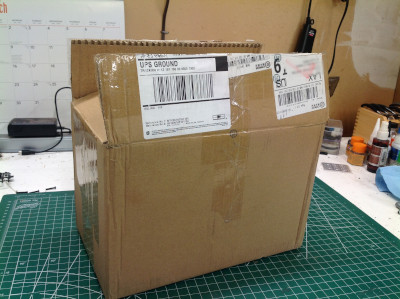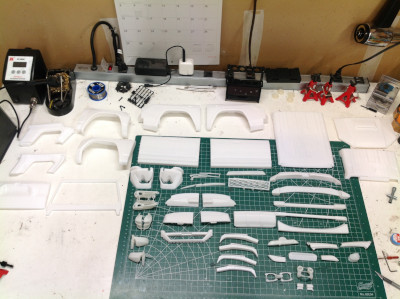I wanted the brackets to remain with the body rather
than with the chassis. I padded up the inner side wall of the body
with styrene sheet and screwed the brackets in place. I only used
one screw which allows the whole thing to swing forward and back
slightly. This way I can tweak the body position to line up with
the wheels. The right hand picture shows the completed body
installation.

